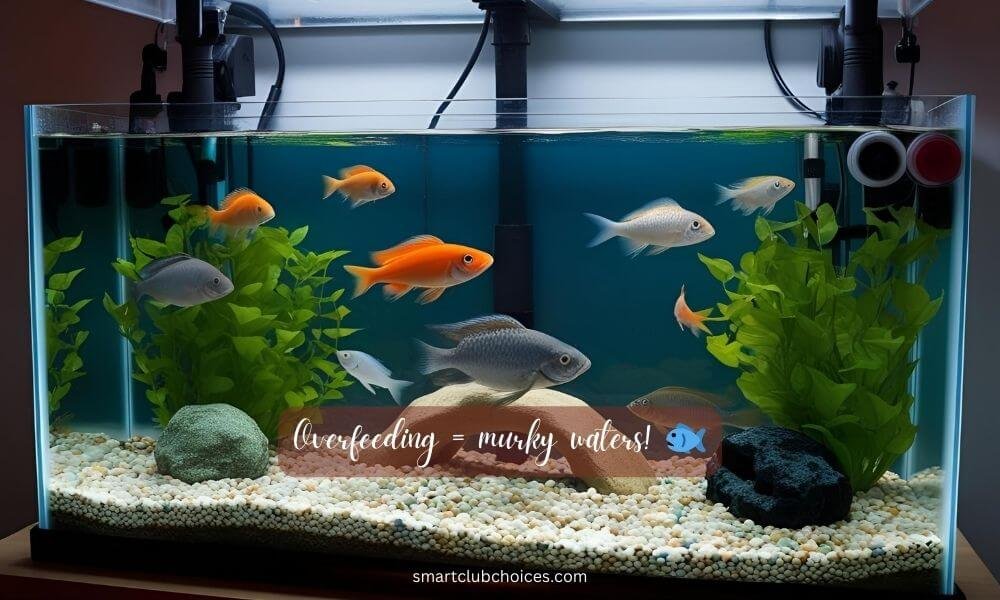Common Fish Tank Mistakes and How to Avoid Them
So, you’ve decided to dive into the world of fish-keeping. Congratulations! Fish are fascinating, low-maintenance, and let’s be honest—they’re way easier to care for than a puppy. But before you rush out to buy the first colorful fish that catches your eye, there’s something you should know: fish-keeping isn’t as simple as filling a tank with water and tossing in a fish.
Even seasoned aquarists make mistakes, but the good news is that most of them are easily avoidable. In this guide, we’ll walk you through the most common fish tank mistakes and how to avoid them. Let’s dive in!
Table of Contents
(1) The Basics – Skipping the Research
Why Research Matters
Fish are living creatures with specific needs. Skipping the research can lead to poor water quality, stressed fish, and even death.
Common Mistakes
- Choosing the Wrong Fish: Not all fish are compatible or suitable for beginners.
- Ignoring Tank Size: Overcrowding can lead to stress and poor water quality.
- Neglecting Water Parameters: Different fish have different water requirements.
How to Avoid It
- Research: Learn about the specific needs of your fish species.
- Plan Ahead: Choose fish that are compatible and suitable for your tank size.
- Test Water: Regularly test and maintain water parameters.
Pro Tip
Start with hardy, beginner-friendly fish like bettas, guppies, or goldfish.
(2) The Setup – Rushing the Process
Why Patience is Key
Setting up a fish tank isn’t a race. Rushing the process can lead to unstable water conditions and stressed fish.
Common Mistakes
- Skipping Cycling: Adding fish to an uncycled tank can lead to toxic ammonia and nitrite levels.
- Overloading the Tank: Adding too many fish at once can overwhelm the tank’s ecosystem.
- Poor Equipment Choices: Using inadequate or inappropriate equipment can lead to poor water quality.
How to Avoid It
- Cycle the Tank: Allow the tank to cycle for 4-6 weeks before adding fish.
- Add Fish Gradually: Introduce fish slowly to allow the tank’s ecosystem to adjust.
- Invest in Quality Equipment: Choose a filter, heater, and lighting that are appropriate for your tank size and fish species.
Pro Tip
Use a water conditioner to remove chlorine and other harmful chemicals from tap water.
(3) The Maintenance – Neglecting Regular Care
Why Maintenance Matters
A clean, well-maintained tank is essential for your fish’s health and happiness. Neglecting regular care can lead to poor water quality, stress, and illness.
Common Mistakes
- Infrequent Water Changes: Skipping water changes can lead to toxic buildup.
- Ignoring Filter Maintenance: A dirty filter can’t effectively clean the water.
- Overfeeding: Excess food can decay and pollute the water.
How to Avoid It
- Regular Water Changes: Perform partial water changes (25-50%) weekly.
- Clean the Filter: Regularly clean and replace filter media as needed.
- Feed Sparingly: Feed your fish small amounts 1-2 times a day, and remove uneaten food.
Pro Tip
Use a gravel vacuum during water changes to remove debris from the substrate.
(4) The Fish – Overcrowding and Incompatibility
Why Fish Selection Matters
Not all fish get along, and some species have specific needs that must be met. Overcrowding and incompatibility can lead to stress, aggression, and poor water quality.
Common Mistakes
- Overcrowding: Too many fish in a small tank can lead to stress and poor water quality.
- Mixing Incompatible Species: Some fish are aggressive or have different water requirements.
- Ignoring Territorial Behavior: Some fish need their own space to thrive.
How to Avoid It
- Follow the Inch-Per-Gallon Rule: Allow one gallon of water per inch of fish.
- Choose Compatible Species: Research fish compatibility before adding them to your tank.
- Provide Hiding Spots: Include plants and decorations to create territories and reduce aggression.
Pro Tip
Start with peaceful, community fish like tetras, guppies, or cory catfish.
(5) The Water – Ignoring Water Quality
Why Water Quality Matters
Clean, healthy water is essential for your fish’s well-being. Poor water quality can lead to stress, illness, and even death.
Common Mistakes
- Ignoring pH Levels: Different fish have different pH requirements.
- Overlooking Ammonia and Nitrite Levels: High levels can be toxic to fish.
- Neglecting Temperature: Sudden temperature changes can stress or harm fish.
How to Avoid It
- Test Water Regularly: Use a water test kit to monitor pH, ammonia, nitrite, and nitrate levels.
- Maintain Consistent Temperature: Use a heater to keep the water temperature stable.
- Use Water Conditioner: Remove chlorine and other harmful chemicals from tap water.
Pro Tip
Keep a maintenance log to track water changes, filter cleanings, and any health observations.

(6) Conclusion: A Happy Fish is a Healthy Fish
Fish-keeping might seem like a lot of work, but it’s worth it to see your aquatic friends thrive. By avoiding common mistakes and providing the right care, you can create a stunning and healthy aquarium that’s both beautiful and beneficial for your fish.
Remember, every fish is different, so take the time to research and prepare before bringing one home. With the right care and attention, your fish will bring joy, color, and a little bit of magic into your life.
So, what are you waiting for? Dive in and create your perfect underwater world. After all, life is better with a little fishy love!








